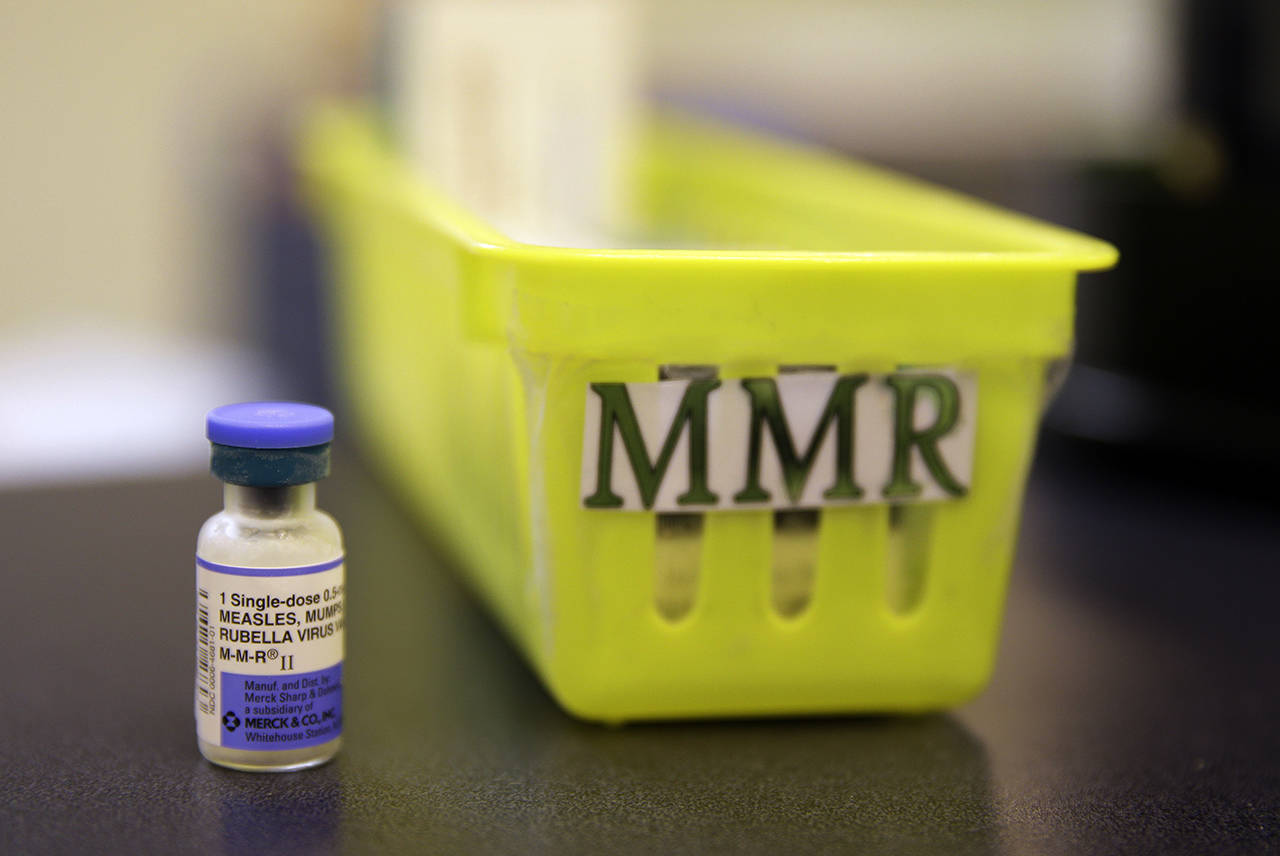OLYMPIA — Thousands of students are allowed to attend Washington public schools without a clear record of whether they’ve been vaccinated against measles and other communicable diseases.
And in some cases where it is clear they lacked required documentation, some schools still did not exclude those students from class as the law requires, according to a newly released state audit.
Superintendents and elected school board members should make complying with immunization rules a priority, the report’s authors recommend; otherwise, state lawmakers should consider getting involved and creating a statewide accountability system.
“School districts want to do the right thing,” state auditor Pat McCarthy said.
“School principals are required to follow the law and they are making decisions to not follow the law. Part of the dilemma they face is that it is difficult to exclude a kindergartner.”
The report, issued Thursday, addressed the varying rate of compliance with student immunization requirements across the state and sought to discern best practices to help districts achieve full compliance.
It examined data on the kindergarten class in the 2017-18 school year collected by the state Department of Health. There were 6,233 kindergartners — 8% of the class — who had not met all of the immunization requirements. Many of them should have been excluded from school for some period of time but were not.
Overall, the number of kids out of compliance could have been higher. Out of 295 school districts in the state, schools in 29 did not report their immunization data or reported having no kindergarten students, in their reports to the state.
“Without complete and accurate information about children’s immunity status, officials may not be able to protect students and others should an outbreak of disease occur,” the report states.
The state has set a goal of 95% vaccination coverage, considered the point at which outbreaks are less likely to occur, according to the report. But with incomplete records, McCarthy said auditors couldn’t determine an accurate rate.
“Washington does not know its true vaccination rate,” she said. “We just don’t know.”
State law requires children get certain vaccines to enter school, preschool and child care. They must be fully immunized against an array of diseases including measles, mumps, chickenpox, whooping cough, diphtheria, polio and tetanus.
School districts provide parents with information on the age or grade level at which their child must be immunized for a particular illness. Districts also provide information on how to obtain a medical, religious or personal exemption.
Earlier this year, in response to a measles outbreak in Clark County in southwest Washington, state lawmakers eliminated the personal exemption for the Measles, Mumps and Rubella (MMR) vaccination. Many students now facing exclusion had this exemption last school year, but it’s no longer valid.
To comply with state law, a parent must provide proof of the required immunizations or immunity for their child. A student can be granted “conditional” status and be allowed to stay in school if efforts are being made to get them immunized. Students are considered in compliance if they have a valid exemption for any unmet immunization requirement.
A student is considered out of compliance if they are not fully immunized for their age against illnesses, not in “conditional” status and without a valid exemption.
The audit reviewed practices of eight school districts — four which had records for all their students and four which reported out of compliance rates ranging from 25% to 61%. None were from Snohomish County.
Schools that constantly engaged with parents and discussed the options achieved higher compliance.
In districts with lower compliance, officials unintentionally provided parents with incomplete information about exclusion and exemptions. They also did not do as much follow-up. And insufficient or inadequately trained staff was a factor in lower compliance too, the report found.
While state law mandates schools exclude students who are out of compliance, no state agency is tasked with making sure that happens. That leaves superintendents and elected school board members to set a district’s policy for complying. And it’s often left to principals, or one of their designees, to administer the policy on a campus.
In Snohomish County, the policies vary widely among districts.
For example, Everett School District excluded 84 students on Nov. 4. By the end of the week 63 had returned. After a second week, the rest had complied with requirements. In Edmonds, district officials sent out 210 exclusion letters on Nov. 1. Today, they have reached 97% compliance.
Snohomish School District reported that on Dec. 17, it had six students excluded. In Marysville, exclusion letters may be sent soon to some students, while Arlington school officials have not excluded any students, as school nurses work with families whose children are still not in compliance.
The state audit includes a list of compliance for every district. It can be found online at sao.wa.gov.
Jerry Cornfield: 360-352-8623; jcornfield@herald net.com. Twitter: @dospueblos.
Talk to us
> Give us your news tips.
> Send us a letter to the editor.
> More Herald contact information.

























